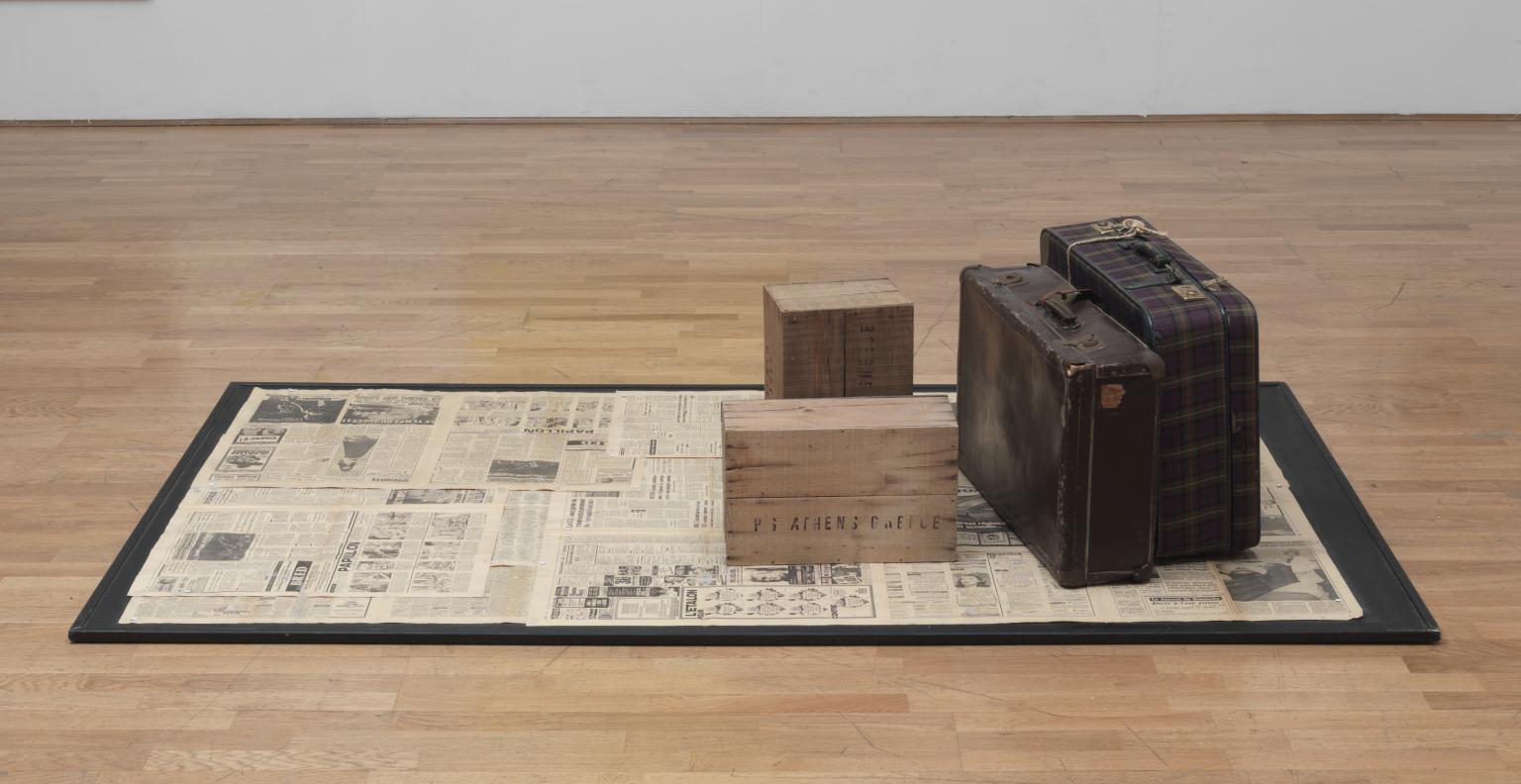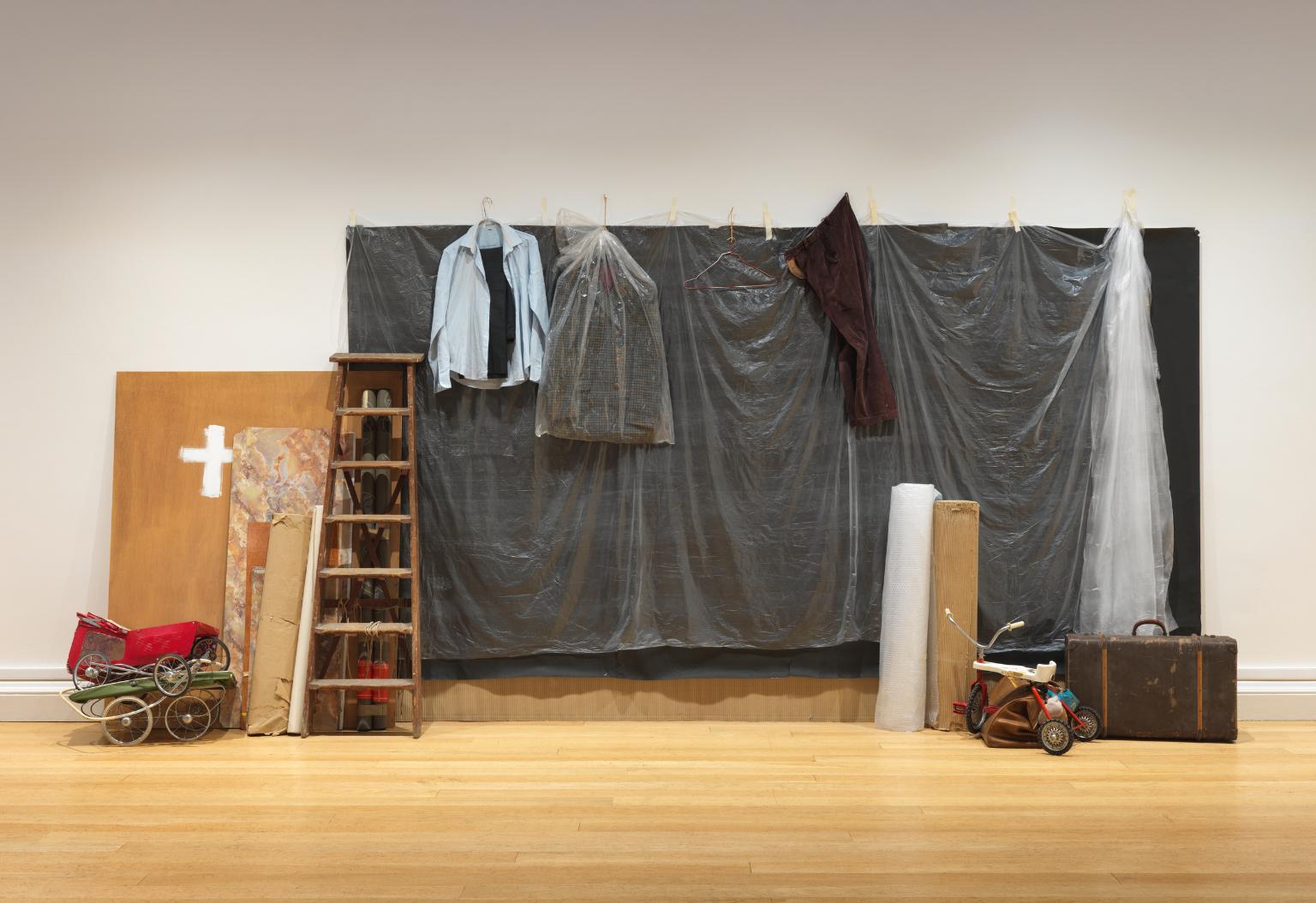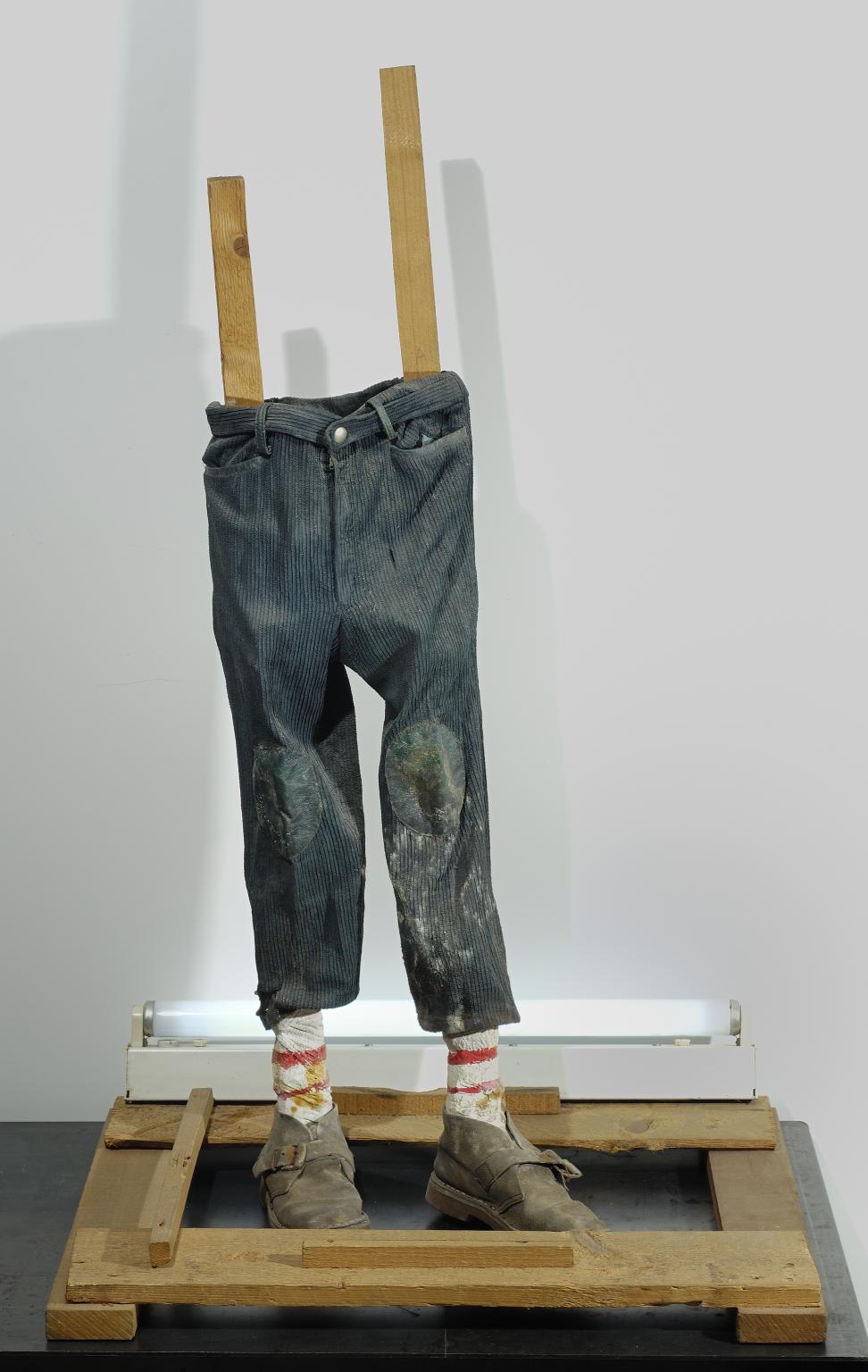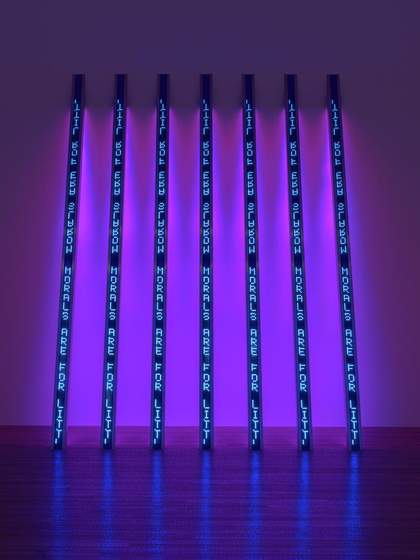Jenny Holzer presents statements that force us to question the words and messages that surround us
Holzer’s work addresses the information overload and opposing perspectives we are confronted with daily. She asks herself: ‘How do you cope – within and without – when all these views are present, sometimes clamouring, sometimes fighting, sometimes murderous?’ Eye-catching and attention-grabbing, Holzer’s art invites us to read and interpret her messages for ourselves.
Early in her career, Holzer delivered her messages on posters and T-shirts so they would be seen in everyday contexts rather than in museums and galleries. LED signage, used for advertising and financial markets displays, offered another vehicle for her text-based projects. The scrolling electronic text echoes the way people encounter fragments of text in city streets.
BLUE PURPLE TILT shares the room with Joseph Beuys’s installation Lightning with Stag in its Glare. A large bronze sculpture, cast from a mount of earth, is suspended from a metal beam above our heads. It represents a lightning bolt striking the ground. Smaller sculptures symbolise animals surrounding it. The stag of the title is an ironing board balanced on logs, cast in shiny aluminium. This is a stark, petrified environment. Beuys was a performance artist, educator and environmentalist. He was concerned about modern society inclining towards ecological disaster.
Art in this room

Sorry, no image available



